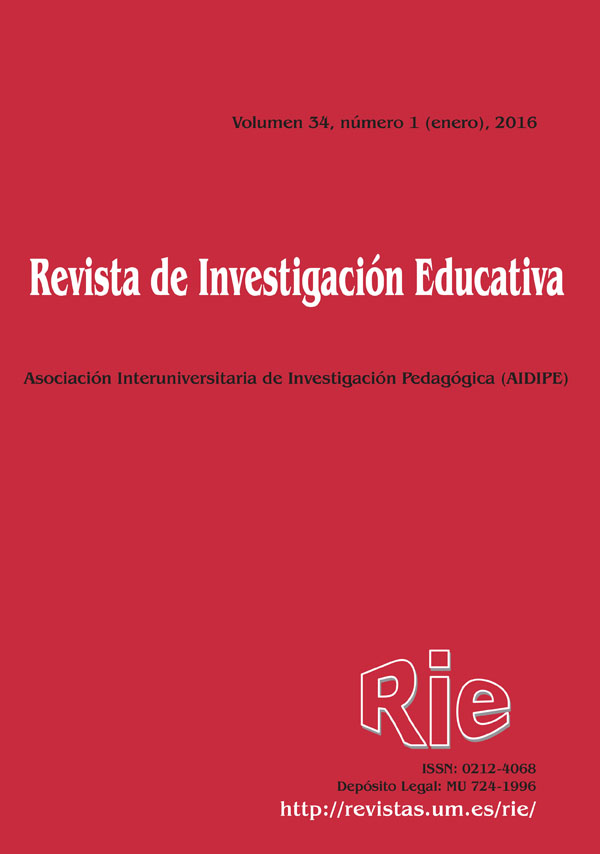Diagnosis of the mathematical competition of the most capable students
Supporting Agencies
- UNED
Abstract
The present study analyzes the results obtained by 102 students of fifth course of primary education with high mathematical, diagnosed capacity this by means of the Battery of Evaluation of the Mathematical Competition and by means of the following approaches: the student’s mathematical yield, the student’s interest for the mathematics in the professor’s opinion and according to the own student, mathematical aptitude measured by the tests Numeric Series and Numeric Problems, repetition or not of course and if it is or not diagnosed as student with high capacity, besides considering the modulating variables sex of the students and center type in which they have studied. It concludes that except the estimate trial of the tutors on the existence or not of mathematical aptitude in the students, the remaining approaches are effective and conclusive. As was of waiting is some differences among the students located in the two levels superiors of the battery, in favor of the highest.
Downloads
-
Abstract2079
-
PDF (Español (España))2132
References
Castro, E. (2004). Perspectivas futuras de la educación de niños con talento. En M. Benavides, A. Maz, E. Castro y R. Blanco (Eds.), La educación de niños con talento en Iberoamérica (pp. 171-185). Santiago de Chile: OREALC/UNESCO.
García Perales, R. (2014). Diseño y validación de un instrumento de evaluación de la competencia matemática. Rendimiento matemático de los alumnos más capaces (Tesis Doctoral). http://e-spacio.uned.es/fez/eserv/tesisuned:Educacion-Rgarcia/Documento.pdf
García Yagüe, J., Gil, C., Ortiz, C., De Pablo, C. & Lázaro, A. (1986). El niño bien dotado y sus problemas. Perspectiva de una investigación española en el primer ciclo de EGB. Madrid: CEPE.
Instituto Nacional de Evaluación Educativa [INEE]. (2005). Resultados en España del estudio PISA 2000. Madrid: Ministerio de Educación, Cultura y Deporte.
Instituto Nacional de Evaluación Educativa [INEE]. (2007). PISA 2006. Informe Español. Madrid: Ministerio de Educación, Cultura y Deporte.
Instituto Nacional de Evaluación Educativa [INEE]. (2008). PISA 2003. Matemáticas. Informe español. Madrid: Ministerio de Educación, Cultura y Deporte.
Instituto Nacional de Evaluación Educativa [INEE]. (2010). PISA 2009: Informe Español. Madrid: Ministerio de Educación, Cultura y Deporte.
Instituto Nacional de Evaluación Educativa [INEE]. (2013). PISA 2012: Informe Español. Volumen I: Resultados y contexto. Madrid: Ministerio de Educación, Cultura y Deporte.
Jiménez Fernández, C. & Baeza Delgado, M. A. (2012). Factores significativos del rendimiento excelente: PISA y otros estudios. Ensaio: Avaliação e Políticas Públicas em Educação, 20(77), 647-676. http://www.scielo.br/pdf/ensaio/v20n77/a03v20n77.pdf
Jiménez Fernández, C. & García Perales, R. (2013). Los alumnos más capaces en España. Normativa e incidencia en el diagnóstico y la educación. Revista Española de Orientación y Psicopedagogía, 24(1), 7-24.
Jiménez Fernández, C., Murga, M. A., Gil, J. A., Téllez, J. A. & Paz Trillo, M. (2010). Hacia un modelo sociocultural explicativo del alto rendimiento y la alta capacidad: ámbito académico y capacidades personales. Revista Educación XX1, 13(1), 125-153.
Jiménez Fernández, C.; Álvarez, B.; Gil, J. A.; Murga, M. A. & Téllez, J. A. (2005). Educación, diversidad de los más capaces y estereotipos de género. Revista Electrónica de Investigación Educativa (RELIEVE), 12(2), 261-287. http://www.uv.es/RELIEVE/v12n2/RELIEVEv12n2_5.htm.
Kearney, K. (1996). Highly Gifted Children in Full Inclusion Classrooms. Highly Gifted Children, 12 (4). Summer. 1-10.
López, B., Beltrán, M. T., López, B. & Chicharro, D. (2000). Alumnos precoces, superdotados y de altas capacidades. Madrid: Centro de Investigación y Desarrollo Educativo.
Maker, C. J. (1989). Educación del superdotado: Tendencias significativas. En R. J. Morris & B. Blatt (Eds.), Educación especial. Investigaciones y tendencias (pp. 130-159). Buenos Aires: Médica-Panamericana.
Mandelman, S. D.; Tan, M.; Aljughaiman, A. M. & Grigorenko, E. L. (2010). Intelectual gifteness: Economic, political, cultural and psychological considerations. Learning and Individual Differences, 20, 286-297.
Mato, M. D.; Espiñeira, E. & Chao, R. (2014). Dimensión afectiva hacia la matemática: resultados de un análisis en educación primaria. Revista de Investigación Educativa, 32(1), 57-72.
Méndez, D., Méndez, A. & Fernández-Río, F. (2015). Análisis y valoración del proceso de incorporación de las Competencias Básicas en Educación Primaria. Revista de Investigación Educativa, 33(1), 233-246.
Ley Orgánica 2/2006, de 3 de mayo, de educación. BOE 4 de mayo de 2006, 106.
Ley Orgánica 8/2013, de 9 de diciembre, para la mejora de la calidad educativa. BOE de 10 de diciembre de 2013, 295.
OCDE (2009). Top of the class. High performers in science in PISA 2006, OECD Publishing. OCDE (2013). PISA 2012 Assessment and Analytical Framework: Mathematics, Reading, Science, Problem Solving and Financial Literacy, OECD Publishing.
Pasarín, M., Feijoo, M., Díaz, O. & Rodríguez, L. (2004). Evaluación del talento matemático en Educación Secundaria. Revista internacional Faisca de Altas Capacidades, 11, 83-102.
Sánchez Manzano, E. (2002). La intervención psicopedagógica en alumnos con sobredotación intelectual. Bordón. Revista de Pedagogía, 54(2-3), 297-309.
The articles and scientific documents published in RIE abide the following conditions:
1. The Servicio de Publicaciones de la Universidad de Murcia (the publisher) has the property rights (copyright) of all the documents published and allows the reuse under the user’s license indicated in point 2.
2. All documents are published in the digital edition of RIE under a Creative Commons Reconocimiento-NoComercial-SinObraDerivada 4.0 Internacional. (legal document) license. These documents can be copied, used, distributed, communicated and explained publicly if: i) the author(s) and its original source of publishing (magazine, publisher and URL of the document) are cited; ii) it is not used for commercial purpose; iii) the existence and the specifications about this license are mentioned.
3. Auto-archive’s conditions. The authors are allowed and encouraged to digitally distribute the pre-print versions (a version before evaluation) and/or post-print (a version that it is already evaluated and accepted to its publication). This promotes circulation and distribution earlier and can increase the citations and significance within the academic community.









